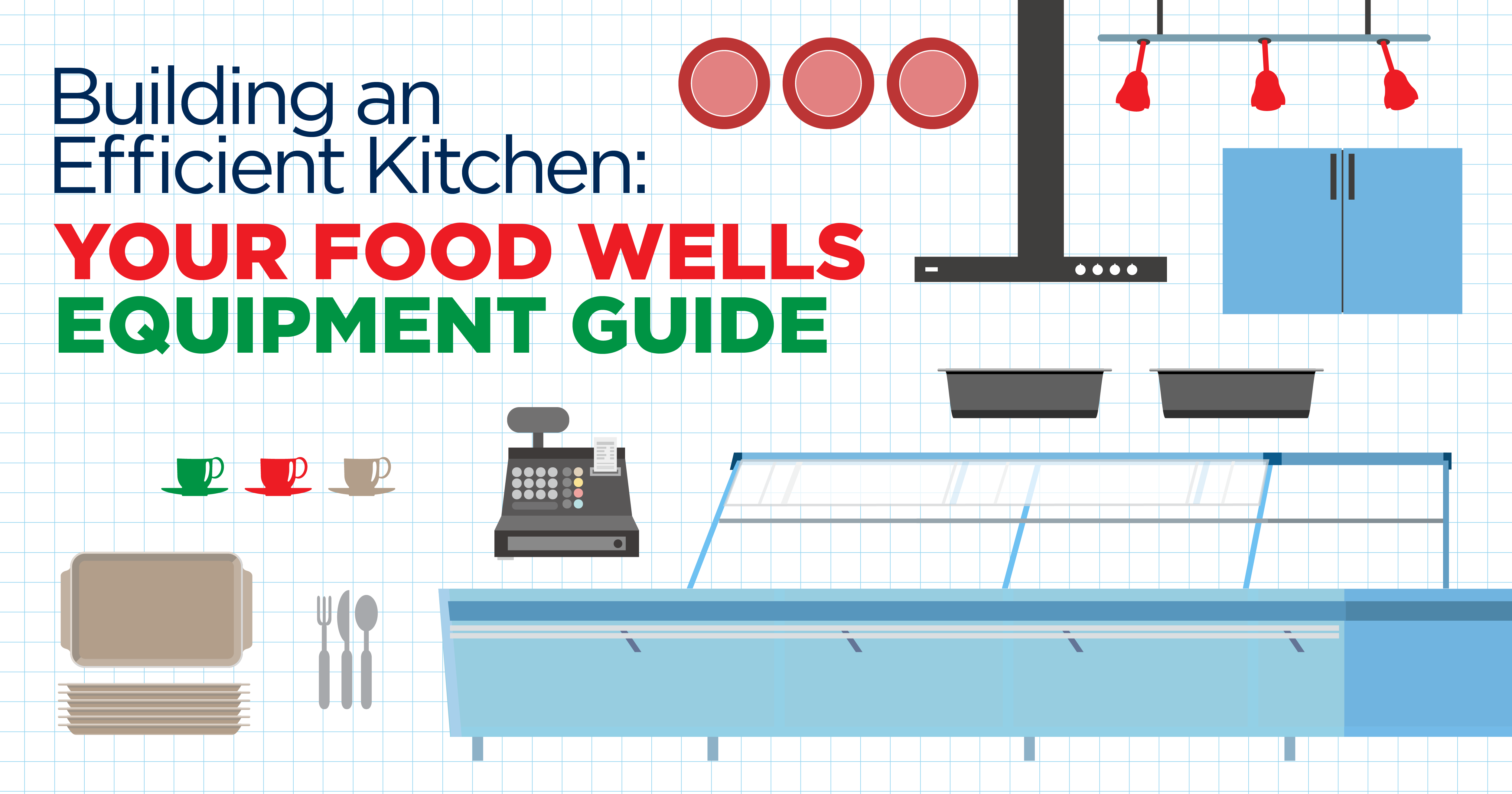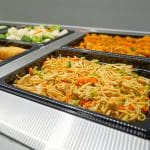With today’s increasing food costs, operators are seeking ways to mitigate food waste. At the…
Building an Efficient Kitchen: Your Food Wells Equipment Guide

In the fast-paced and demanding world of the foodservice industry, a well-equipped kitchen is critical to a successful operation. The efficiency, quality and reliability of your kitchen equipment can make or break you. Ensuring food remains at the correct serving temperature, enhancing food presentation and streamlining kitchen operations are pivotal factors that lead to customer satisfaction.
In this comprehensive guide, we’ll explore the critical role of food wells in commercial kitchens and provide you with some key insights to consider when shopping for equipment. We’ll also explore the advantages and disadvantages of different types of food wells, what materials are best and the importance of energy efficiency. Whether you’re a seasoned foodservice professional or just starting out, this guide will empower you to make informed decisions that will set your kitchen up for success.
The role of food wells in commercial kitchens
Ensuring food quality and safety
Foodborne illness is a significant concern in the foodservice industry. Serving food at the correct temperature is vital to reducing the risk of foodborne pathogens. Food wells play a pivotal role in this regard, maintaining dishes at the desired serving temperature, and ensuring they are safe for consumption.
Elevating food presentation
The adage “the first bite is with the eyes” holds especially true in foodservice. Food wells maintain the visual appeal of your dishes, keeping them fresh, appetizing and ready for presentation. From gravy to sauces, food wells help preserve the texture, color and flavor that make your offerings tasty.
Streamlining kitchen operations
Efficiency is the cornerstone of any successful kitchen, and food wells help streamline kitchen and serving operations by allowing you to prepare and hold food for service. This, in turn, enables better organization and meal planning, helping you meet the demands of a busy service without compromising food quality. Additionally, reducing food waste by extending the shelf life of prepared dishes is not just good for your bottom line; it’s also an eco-friendly practice.
5 factors to consider when shopping for food wells
Size and capacity
Choosing the right sized food wells is important to meet your kitchen’s unique needs and its available space. Assess the typical volume of food you prepare and serve during peak times, ensuring the food wells have the capacity to hold the right quantity of dishes. Be sure to consider the diversity of your menu — you may need different sized food wells to accommodate various dishes.
Versatility and flexibility
Some food wells offer adjustable inserts or compartments, which can be highly beneficial if you have limited space and need to adapt to changing menu requirements. Look for food wells that allow you to switch between hot and cold functions, providing the flexibility to cater to different types of dishes. LTI’s QuickSwitch technology, for instance, enables seamless transitions between hot and cold, making it an excellent choice for kitchens with ever-changing menus.
Heating methods: hot, cold and dual-temperature food wells
The type of food well you choose should align with your specific menu and kitchen needs. Hot food wells provide precise temperature control, making them ideal for keeping hot dishes at the right serving temperature. They can hold a wide range of hot items and are known for rapid heating, which is invaluable during peak hours. The even heating they offer prevents hot spots and ensures consistent food quality. However, they do tend to be more energy-intensive.
On the other hand, cold food wells are designed to keep chilled items at the proper serving temperature, enhancing the presentation of cold dishes and saving energy as they don’t require heating elements. They are particularly suitable for salads, desserts and condiments. Keep in mind that maintaining consistent temperatures in a hot kitchen environment can be a challenge for cold food wells.
Dual-temperature food wells offer the flexibility to switch between hot and cold compartments, making them perfect for kitchens with frequently changing menus. Products like LTI’s QuickSwitch convertible food wells enable these seamless transitions, ensuring efficiency and versatility.
Materials
Choosing the right materials for your food wells is essential for durability and long-term performance. Stainless steel, a widely favored material in commercial kitchens, offers exceptional durability and resistance to corrosion, rust and staining. Its easy maintenance and non-porous surface make it a top choice for ensuring food safety and hygiene. Stainless steel’s sleek and professional appearance also enhances the overall aesthetic of your kitchen.
Energy efficiency
Energy efficiency is not only about saving on utility bills but also contributing to a more sustainable kitchen operation. When shopping for food wells, evaluate factors such as Energy Star certification, insulation, thermostat controls, LED lighting and temperature recovery. Energy-efficient models may have a higher initial cost, but they offer long-term savings and a more eco-friendly footprint.
Equip your kitchen with the right food wells
When it comes to meeting your food well product needs, consider partnering with LTI. Our commitment to providing durable, energy-efficient, and cutting-edge technology foodservice solutions ensures your kitchen operates at its best. We offer a wide range of high-quality food well solutions that align with the principles and recommendations outlined in this guide. From hot to cold and dual-temperature food wells, our products are designed to meet the diverse needs of your commercial kitchen.



